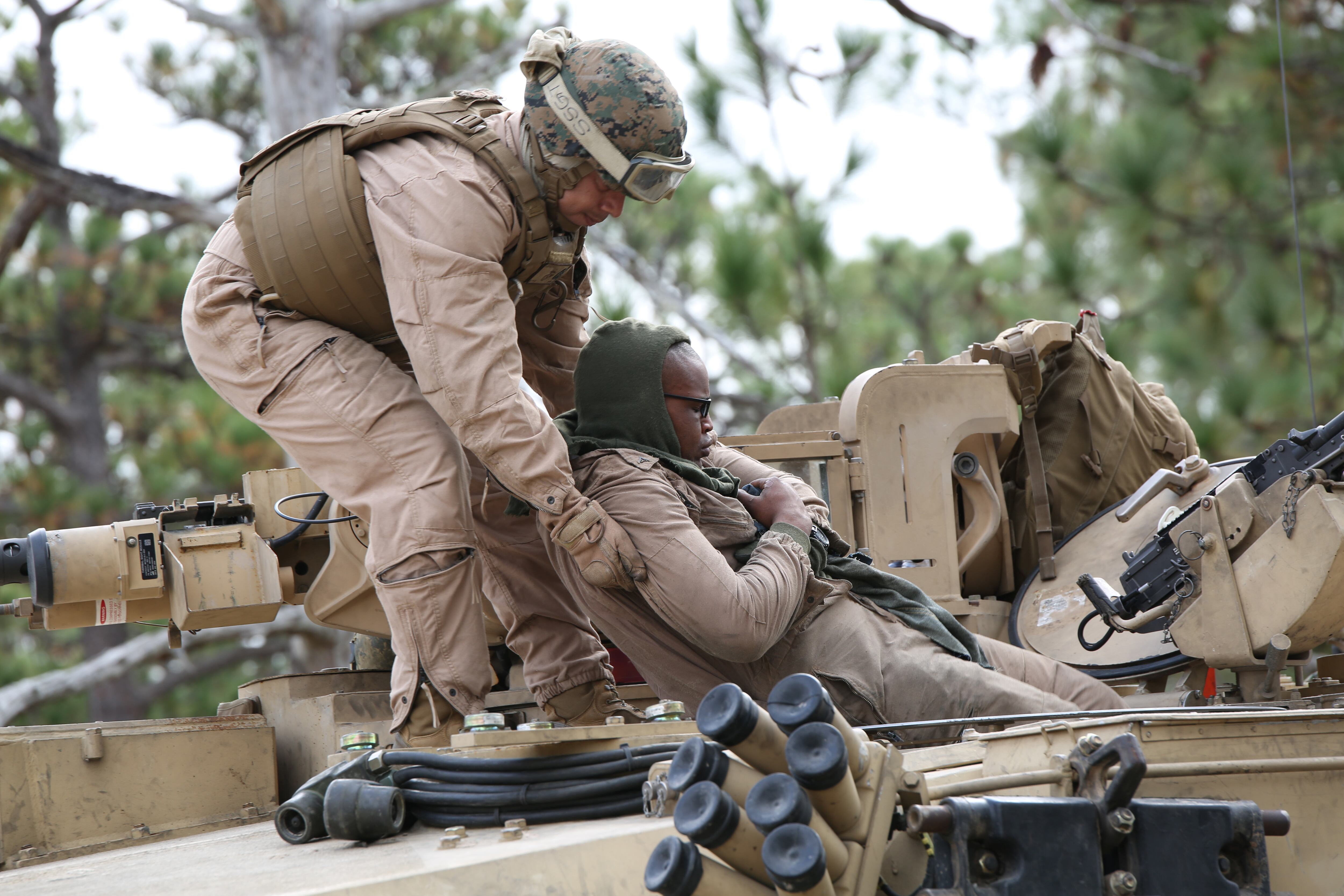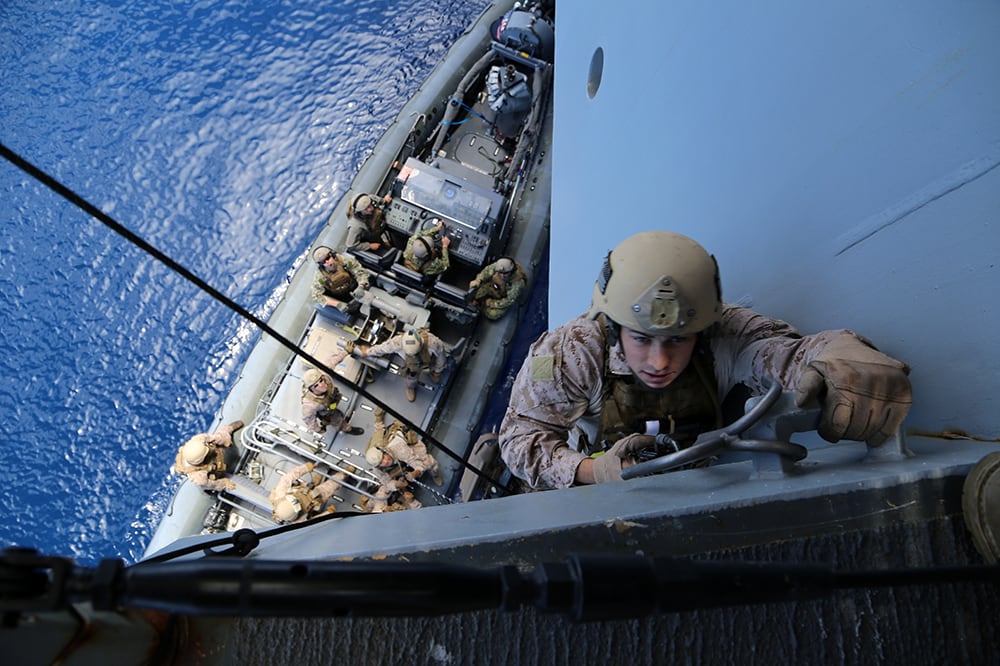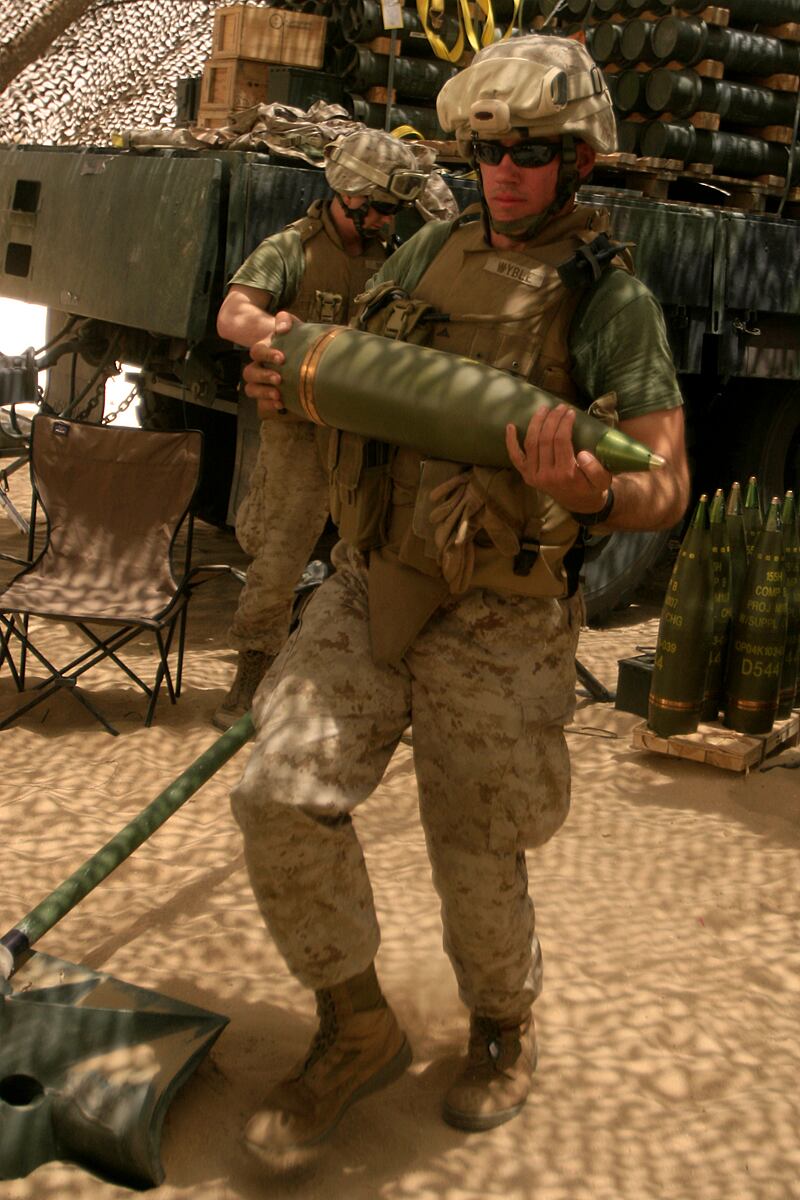It could get a whole lot tougher for Marines to make it into more than two dozen ground combat jobs as Corps officials unveil new physical standards that troops must meet before shipping off to the fleet.
Marines who leaveing boot camp or Officer Candidates School hoping to join infantry, weapons, artillery and mechanized units will now face a host of new requirements before they can graduate from their military occupational specialty schoolhouses, Marine Corps Times has learned.
The new rules, which require Marines to prove they can accomplish some of the toughest tasks related to their jobs, are gender-neutral. That means all Marines — male or female — will have to meet the requirements before they're cleared for graduation.
The requirements affect Marines heading into 29 MOSs in the following fields: infantry; artillery; combat engineering; tanks and amphibious assault vehicles; ground ordnance; and some close-air support roles.
A couple of the new standards are universal. Marines in all 29 of the MOSs must be able to perform a casualty evacuation and an MK19 grenade launcher lift. Others vary by job, such as carrying a casualty out of a tank, scaling a wall, swimming 2,000 yards or loading heavy artillery rounds for certain weapons systems.

Marines with the Ground Combat Element Integrated Task Force conduct a casualty evacuation drill at Camp Lejeune, N.C. According to Marine Corps data from that experiment, women struggled with casevacs, which is a new requirement for more than two dozen jobs.
Photo Credit: Cpl. Paul S. Martinez/Marine Corps
The new standards went into effect Sept. 30 in accordance with Defense Department policy, said 1st Lt. Matt Rojo, a spokesman for the Marine Corps' Training and Education Command. They affect all Marines who start their MOS schools after that date, he said.
The standards were developed as a result of the Marine Corps' nine-month-long experiment during which men and women assigned to ground combat specialties were studied as they carried out a series of combat assessments. While the full report on the data collected during that experiment has not yet been released, leaders have said it would be used to determine what it takes for Marines to serve in infantry, weapons, artillery, or mechanized units, including tanks or other armored vehicles.
Here's the first look at the demanding physical standards Marines joining those communities will now have to meet.
How it works
While many of the MOS-producing schoolhouses already cover the types of requirements now laid out in the gender-neutral standards, this will be the first time Marines will be formally tested to make sure they are able to meet the requirements associated with their new jobs.
Each schoolhouse will examine how best to integrate the new requirements into existing programs of instruction, Rojo said. Those running the new tests have already received formal, on-site training on how they should be administered, he added.
For now, the new gender-neutral standards only apply to new Marines entering into their MOSs, Rojo said. It raises questions about how Marines at boot camp or Officer Candidate School might be screened for jobs in certain communities.
It also remains to be seen how the standards might affect Marines already assigned to these 29 MOSs.
"While only new Marines will be tested at the formal learning centers, all Marines are expected to maintain proficiency in their training standards," Rojo said.

Marines with a tank platoon conduct a land tow of an M1A1 Abrams tank during the Ground Combat Element Integrated Task Force. Lifting heavy towbars on vehicles is now a requirement for Marines heading into certain military occupational specialties.
Photo Credit: Cpl. Paul S. Martinez/Marine Corps
The Marine Corps was the only military service to launch a physical requirements study like that on the scale of its Ground Combat Element Integrated Task Force, ahead of the Defense Department-wide mandate to open all jobs to women. About 400 Marines, including about 100 women, were hooked up to heart rate monitors and GPS tracking devices as they carried out a host of repetitive assessments.
Initial findings from that study indicated that all-male teams outperformed those that included women in nearly every area. Not only did the female Marines sustain higher injury rates, but were also slower, fired weapons with less accuracy than men, struggled to clear walls, and sometimes failed at simulated casualty evacuations.
The new standards will now require all male and female Marines entering certain jobs to prove they can do those things successfully.

A Marine with the 11th Marine Expeditionary Unit's force reconnaissance detachment climbs up a caving ladder on the side of a ship. All recon Marines are now required to prove they can climb similar ladders in order to graduate from their schoolhouses.
Photo Credit: Gunnery Sgt. Rome M. Lazarus/Marine Corps
Marines in all infantry MOSs must scale a wall. Those looking to go reconnaissance must swim 2,000 yards while wearing fins and climb rickety ladders. Marines heading to light armored vehicle units must prove they can move an injured Marine out of a vehicle and lift heavy vehicle towbars. Combat engineers must be able to breach doors with heavy objects and lift the accordion-shaped HESCO barriers, which Marines use to fortify their positions.
Download: Standards by MOS
All of that is a direct result of the data and observation collected during the Marines' women-in-combat study. A Marine involved with the study, who spoke on the condition of anonymity since it hasn't been fully released yet, said TECOM "meticulously reviewed, validated, and developed operationally relevant, gender-neutral standards that correlate directly to individual capabilities and their contribution to the accomplishment of team missions."
The new tests won't take the place of the standard Physical or Combat Fitness Tests all Marines must take, which he said will remain as important assessments of overall fitness. Anyone who might fail to meet to successfully pass a new standard on the first go-around will have a chance to retake it, he added.
Marine training and readiness manuals are now updated to reflect the new requirements for the 29 MOSs.
The controversy
If all MOSs open to female Marines on Jan. 1, despite the Marine Corps' request for an exemption from the Defense Department-wide requirement, the new standards could prove difficult for women to meet.
At the end of the Marines' nine-month study, only two of the roughly 24 women in the infantry-trained rifleman platoons were left standing at the end. There were roughly two dozen women in the infantry company when the experiment began, but most were dropped due to injury.
The new requirements could also be difficult for some men entering into certain MOSs as well. During the experiment, Capt. Mark Lenzi, the commanding officer of the weapons company, which consisted of machine gun, anti-armor and mortar platoons, said some male Marines aren't up to the tasks that come with serving in the infantry.

A Marine carries a 155mm artillery round to his M777 Howitzer. Marines in certain military occupational specialties now have to meet new gender-neutral standards, including lifting heavy artillery rounds like this one for some.
Photo Credit: Staff Sgt. TG Kessler/Marine Corps
Sometimes, he said, unit leaders are forced to give weaker Marines an administrative or clerical position in order to avoid moving them out of the unit. Gender-neutral standards would prevent that Marine from ever joining a unit with which they can't keep up, he said.
"If you're [5 feet, 6 inches tall] and 120 pounds, you have virtually no chance of doing this job, whatsoever," Lenzi said.
The Marines' study has led to caused some controversy, however. Navy Secretary Ray Mabus calleding the experiment flawed, and alleged indicating that some male Marines went into it not wanting to see the women succeed. He also criticized and that the Corps for measuringed averages performance instead of looking at individual capabilities.
But the Marine involved with the study fired back at Mabus' remarks. When the study began, researchers went when into it with the expectation that they would see no differences between the all-male teams and those that included women, he said.
"The use of averages is merely a way to categorize overall performance of the different groups," the Marine said. "If the study had seen no difference in the 'averages' it would conclude that the introduction of women has no effect — be it positive or negative. However, given that differences existed, the GCEITF study conducted further analysis at the individual level."
It was then that researchers began looking at the traits of each Marine in a crew, squad or team to see whether individual physical characteristics proved essential successful for all members to be able to carry out a specific mission. That, the Marine said, would help determine what all Marines in that job should be able to prove they can do.
"Identifying individual characteristics is important because it would help to establish gender-neutral standards that could be applied to future applicants to those MOSs."
Staff writer Hope Hodge Seck contributed to this report.





